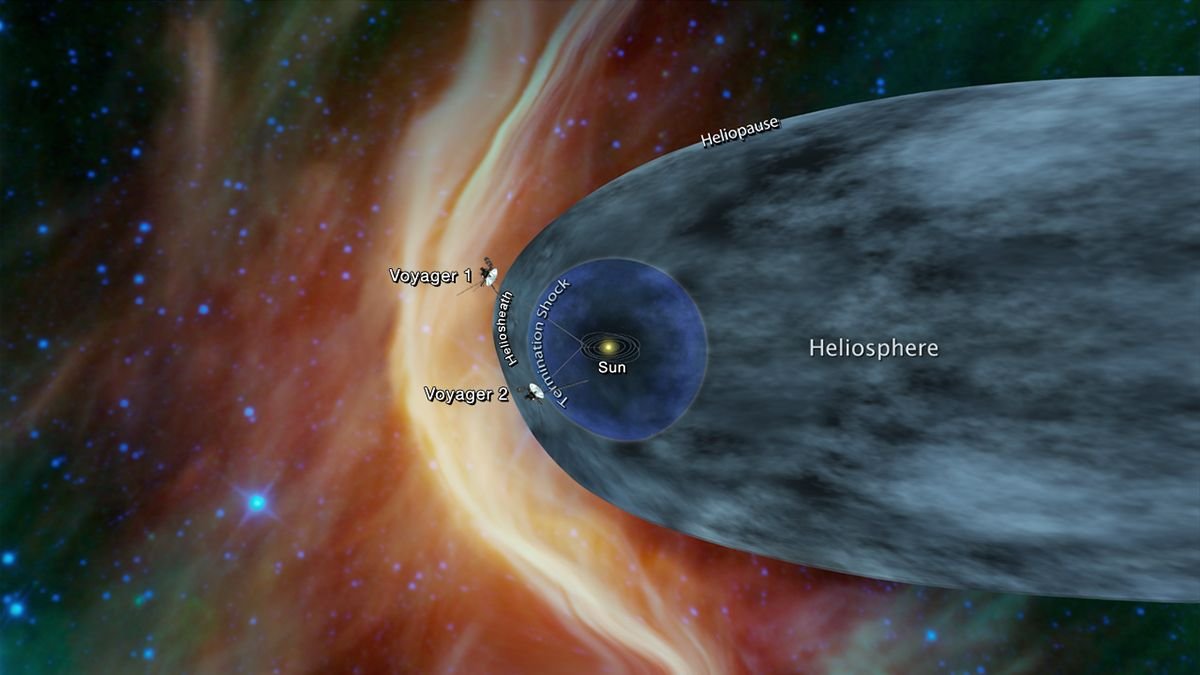NASA's Voyager 2 probe has been travelling through space for 41 years and currently finds itself around 11 billion miles from Earth, or more than 118 times the distance between the Earth and Sun.
Now, operators think that Voyager 2, which launched from the Kennedy Space Center in August 1977, may be reaching the edge of the Solar System where interstellar space begins.
For the last decade or so, the probe has been traveling through the outermost layer of the heliosphere—a vast spherical region of space that is dominated by the influence of the Sun and its magnetic field. Once Voyager 2 passes through the boundary of the heliosphere, known as the heliopause, it will become only the second man-made object, after its twin Voyager 1, to enter interstellar space.
Since late August this year, onboard instruments have measured about a 5 percent increase in the rate of cosmic rays hitting the spacecraft, compared to the beginning of the month.
Cosmic rays are high-energy radiation originating from outside the Solar System, made up of fast-moving particles. Some of these cosmic rays are blocked by the heliosphere, which is why mission planners expect to detect more of the radiation as the probe approaches and crosses the heliopause. Voyager 1 observed a similar increase in May 2012—about three months before it entered interstellar space.
However, the increase in the detection of cosmic rays is not necessarily a definitive sign that the probe is about to cross the heliopause, according to the Voyager team. Voyager 2 is in a completely different region of the heliosphere's outermost layer to Voyager 1, so it's possible that the timeline of their exits from the Solar System will vary.
Voyager 2 is also approaching the heliopause six years after its twin, which is significant because this boundary moves inward and outward during the Sun's 11-year cycle of activity.

"We're seeing a change in the environment around Voyager 2, there's no doubt about that," Voyager Project Scientist Ed Stone, from Caltech in Pasadena, said in a statement. "We're going to learn a lot in the coming months, but we still don't know when we'll reach the heliopause. We're not there yet—that's one thing I can say with confidence."
Both Voyager spacecraft were built by NASA's Jet Propulsion Laboratory in Pasadena, California, which continues to operate them. During their time in space, the Voyagers have revolutionized our understanding of the outer Solar System. Voyager 2, for example, is the only spacecraft to have flown by all four of the outer planets. It was also the first to image the rings of Jupiter, Uranus and Neptune.
Meanwhile, the probes were the first to discover active volcanoes beyond the Earth on Io, the first to detect hints of an ocean outside our planet below the icy crust of Europa and the first to observe lightning on another world amid Jupiter's violent storms. They can also be credited with identifying several new planetary moons, including 11 around Uranus.
Even though neither will come remotely near to another star system for at least 40,000 years, they are still providing us with fascinating insights into the entirely unexplored area where our sun's influence diminishes and interstellar space begins. All the more remarkable considering they run on 1970s technology with less computing power than an average smartphone in 2018.
Uncommon Knowledge
Newsweek is committed to challenging conventional wisdom and finding connections in the search for common ground.
Newsweek is committed to challenging conventional wisdom and finding connections in the search for common ground.
About the writer
Aristos is a Newsweek science reporter with the London, U.K., bureau. He reports on science and health topics, including; animal, ... Read more
To read how Newsweek uses AI as a newsroom tool, Click here.








